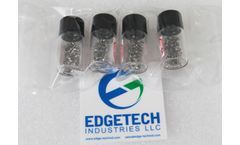Immune Reaction Articles & Analysis
18 articles found
The proteins used in VLP formation are often derived from the virus itself, ensuring that the resulting particles present the same epitopes that can trigger an immune response. This feature is particularly advantageous in vaccine development, where the aim is to elicit an immune reaction without exposing individuals to pathogenic viruses. ...
The high biocompatibility of tantalum means that it integrates seamlessly with the human body, reducing the risk of immune responses or adverse reactions, a critical factor for long-term implantation. ...
Pharmaceutical companies and manufacturers are increasingly required to evaluate the immunotoxic potential of their products to ensure they do not provoke adverse immune reactions. By identifying potential risks early in the development process, companies can make informed decisions and avoid costly setbacks. ...
Enzyme-Linked Immunosorbent Assay (ELISA)Using a specific antibody to recognize a specific type of collagen, the content of collagen can be quantitatively analyzed through enzyme-labelled immune reaction and color development.2. Western BlotThis method can be used to detect and quantify the relative levels of specific collagen in tissue or cell lysates.Molecular ...
It plays a crucial role in maintaining protein homeostasis, regulating various biological reactions in cells, and ensuring the normal physiological functions of organisms. Immunoprecipitation is a commonly used method for detecting protein interactions. Through specific immune reactions, the target protein and the proteins it binds to are ...
The advent of mRNA vaccines has revolutionized the field of immunization, offering a rapid and adaptable response to emerging infectious diseases. ...
At the heart of this endeavor lies the process of affinity maturation, a dynamic and highly orchestrated mechanism that refines the binding capabilities of antibodies. When the immune system encounters a foreign invader, such as a virus or bacteria, it initiates a cascade of events that culminates in the production of antibodies – specialized proteins designed to recognize ...
Allergen is a type of antigens that produces an exaggerated immune system response. Such reactions are called allergies. Food allergies have many symptoms, and some of these can be incredibly severe, including itching of the skin, swelling of the face, acute breathlessness, a sore throat, in extreme circumstances, even death. ...
The synthesis of carbohydrates involves a series of enzymatic reactions that convert simple molecules into more complex structures. ...
Its primary function revolves around converting extracellular ATP into immunosuppressive adenosine, working in tandem with CD39 within normal tissues to curtail excessive immune reactions. However, this mechanism is often hijacked by tumors, utilizing CD73 to foster an adenosinergic process that shields them from immune assaults. ...
Furthermore, due to the complexity of the human immune system, antibody drugs may also cause adverse reactions such as immune and allergic reactions. ...
” This translational study analyzed patient tissues, preclinical models and retrospective data to determine how the IL-6 T helper 17-cell (Th17) pathway is involved in toxic responses and can be inhibited to separate inflammatory autoimmune responses and antitumor immunity reaction. IL-6 has been implicated in resistance to immunotherapy in ...
It is also known as the major histocompatibility complex (MHC), and it is the most polymorphic region in the human genome, involving diverse immune reactions. HLA is divided into HLA-class I (corresponding to MHC class I) and HLA-class II (corresponding to MHC class II) according to the different types of T cells they interact with. ...
Blueberry Therapeutics is a drug development company committed to finding new and improved treatments for a range of dermatological conditions affecting the skin and nails. The future and long-term effect of the global COVID-19 pandemic (caused by severe acute respiratory syndrome coronavirus 2 [SARS-CoV-2 virus]) on dermatology practice and skin health is still unknown, but here we provide some ...
But, their studies showed that in nearly all cases, the fungus is the likely cause. And, it is not an allergic reaction, but an immune reaction. Using new methods of collecting and testing nasal mucus, they found a total of 40 different kinds of fungi in 96% of the 210 chronic sinusitis sufferers the researchers studied. In a group of 101 ...
Mechanical cell damage can generate a T-cell-mediated immune reaction. Therefore, quantities of activated CD4- and CD8-positive T-lymphocytes depend on the extent of cellular ...
Although many Lactobacillus strains used as probiotics are believed to modulate host immune responses, the molecular natures of the components of such probiotic microorganisms directly involved in immune modulation process are largely unknown. We aimed to assess the function of polysaccharide moiety of the cell wall of Lactobacillus casei strain Shirota as a ...
But, their studies showed that nearly all cases, fungus is the likely cause.” And, it is not an allergic reaction, but an immune reaction.” Using new methods of collecting and testing nasal mucus, they found a total of 40 different kinds of fungi in 96% of the 210 chronic sinusitis sufferers the researchers studied. In a group of 101 sufferers ...
















